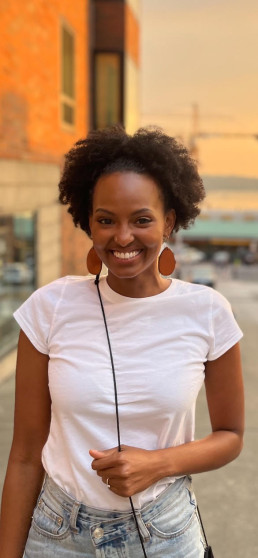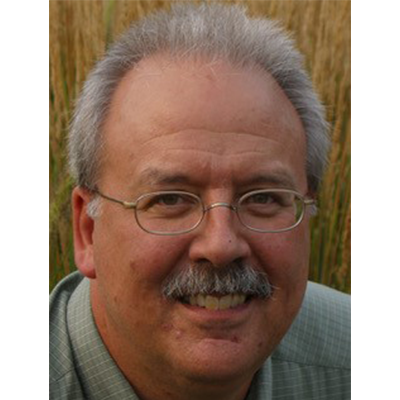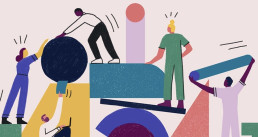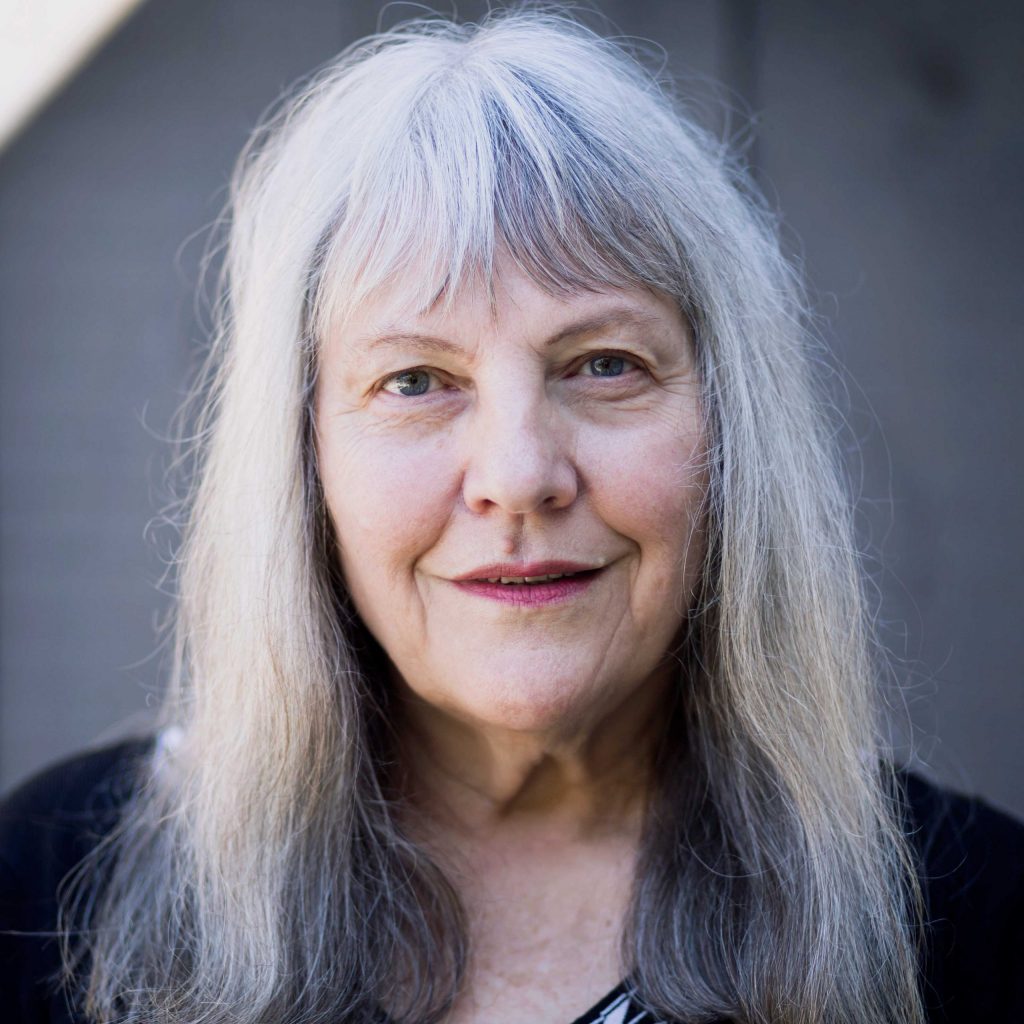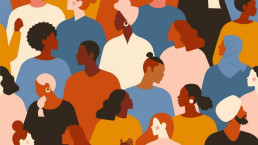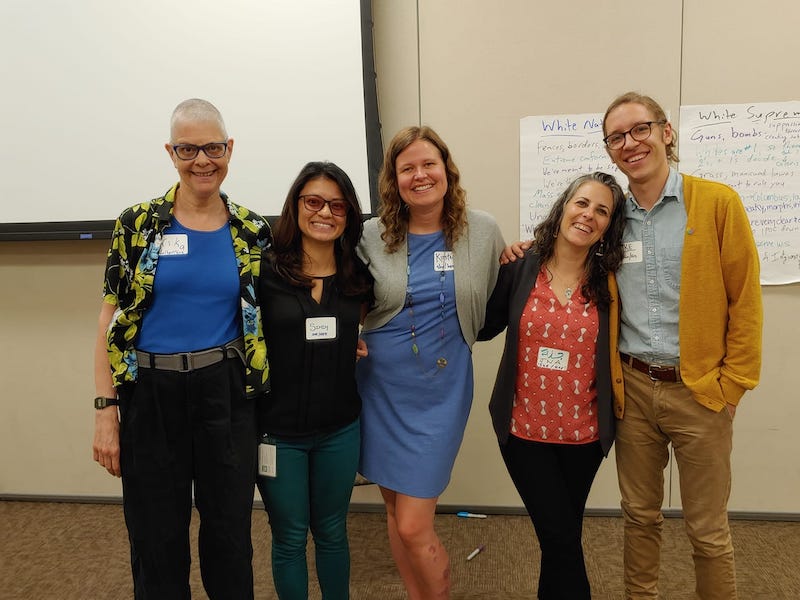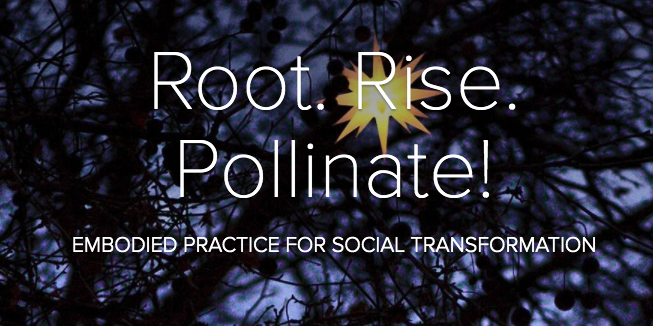The Wisdom of W.A.I.T.ing: Mindful Sharing in a Network Age
July 12, 2021Network Mindset,Network Processes,Blog
“We have two ears and one mouth, so we should listen more than we say.”
— Zeno of Citium
The other day I was reminded of the group working agreement “W.A.I.T.” (which stands for, “Why am I talking?”) as a guideline for people to be mindful of sharing air time in discussions. Since then I have been taking fresh note of my own inclinations and motives to not only talk in discussions, but also to share on social media. And as I have done this, I have also been more curious about what motivates others to share, verbally, in written and other forms. What are they thinking? Are they thinking about other people? If so, who? Have they thought through possible impacts? What do they care about?

I am a big fan of and subscriber to The Christian Science Monitor, which publishes a weekly digest of updates and perspectives on things happening around the globe, including (perhaps radical for these times) “bright spots” and “points of progress.” The editors and writers of Monitor articles also have a wonderful practice of publishing a little blurb for each offering under the heading “Why we wrote this.” How refreshing! What if all “news outlets” were to do this, or at least pause and ask this before writing and publishing/speaking?
And what if we were to do this in our different networks and communities? Might this help to break some of the spirals of othering and outrage (not to mention challenge the algorithms behind our growing social dilemma)? And shy of this, might the practice of W.A.I.T.ing or mindful and intentional sharing (viewed perhaps more generatively as “nourishing”) help people deliver on the promise of “network effects” to take communities and societies in a more prosocial direction?
I am currently working with two organizations over the course of 2021 to help staff and partners develop more networked ways of thinking and acting/being. Recently we had a discussion about how to keep the staff more up to date with respect to one another’s network weaving activities (connections made, crucial take-aways, immediate next steps) and also share other interesting content and connections. Trying to strike the right balance between radio silence and deluge, we started exploring how implementing the W.A.I.T/S. (Why am I talking/sharing?) prime might help. Along the way, a couple of people said that W.A.I.T/S. might also stand for “Why aren’t I talking/sharing?” and encourage the otherwise less inclined (for various reasons) to reconsider. This is stimulating rich conversation about how to tend and modulate important flows in various systems (organizational, community, school, etc.) to support learning, resilience, alignment, equity, emergence, coordinated action …
All this to say, whatever our goal(s) may be, it could be important to … W.A.I.T for it. This is how less conscious and helpful sharing (and silence) might become a practice of care-full curation (making thoughtful offers to and requests – sharing and caring can also include asking questions! – of one’s communities).
originally published at Innovation Interaction for Social Change
featured image found here
Curtis Ogden is a Senior Associate at the Interaction Institute for Social Change (IISC). Much of his work entails consulting with multi-stakeholder networks to strengthen and transform food, education, public health, and economic systems at local, state, regional, and national levels. He has worked with networks to launch and evolve through various stages of development.
PLEASE DONATE to help Network Weaver continue in it’s mission to offer free support and resources to networks worldwide.
Sadia Hassan
Sadia Hassan is an award winning writer, equity consultant and network weaver who enjoys using a human-centered approach to crafting inclusive, equitable, and participatory processes for capacity building. Her skills include: leadership development training using Public Narrative, facilitation, coaching, cultural strategy, program management and workshop design.
Building Community Food Webs
Ken Meter’s book, Building Community Food Webs. was released by Island Press on April 29. The book highlights the importance of community network-building as a core part of building community-based food systems, and shows that building mutual trust over decades is critical to success. Chapter 6 features Appalachian Center for Economic Network’s (ACEnet) persistent work, listening closely to what residents with limited wealth felt they needed, and designing tailor-made solutions that helped them accomplish their goals. As broader networks engaged more and more civic leaders in the Athens, OH and Nelsonville, OH area, this grew into lasting support for economic development that was focused on those who needed it the most.
The book also profiles 7 other community foods initiatives in Montana, Hawaii’i, Tucson, Northeast Indiana, Phoenix, Brighton CO, and Dakota County, Minnesota. These are carefully selected from Ken’s work in 144 regions in 41 states over the past two decades. Each one highlights efforts of special inspiration, or special resistance, to community-based foods efforts.
Building Community Food Webs also offers the first published analysis of the extractive nature of the US food system — with special focus on the fact that the commodity system has drained more than $4 trillion away from the US farm sector — a sector that is worth only $3 trillion in total assets today.
In the concluding chapters, the book also features Ken’s summary of the key issues that community foods initiatives need to get right in order to be most effective.
Further information about the book can be found at: https://islandpress.org/books/building-community-food-webs
featured image found HERE
Ken Meter is one of the most experienced food system analysts in the U.S., integrating market analysis, business development, systems thinking, and social concerns. Meter holds 50 years of experience in inner-city and rural community capacity building. His local economic analyses have promoted local food networks in 143 regions in 41 states, two provinces, and four tribal nations. He was commissioned to create statewide food system assessments for New Hampshire, Hawai’i, Alaska, Mississippi, South Carolina, Indiana, Ohio, and Minnesota, and developed strategic regional food plans for 16 regional food systems. Meter consulted with the USDA Agricultural Marketing Service and Colorado State University as one of 14 co-authors of a toolkit for measuring economic impacts of local food development. He is co-editor of Sustainable Food System Assessment: Lessons from Global Practice (Routledge ,UK) in 2019. Meter’s work can be found at www.crcworks.org
PLEASE DONATE to help Network Weaver continue in it’s mission to offer free support and resources to networks worldwide.
Collaborative Funding for a Just Transition
July 5, 2021Blog,Transformation,Equity
Several months ago I was interviewed by Leslie Meehan and Ben Roberts of Now What?! The topic was Collaborative Funding for a Just Transition and we explored innovative strategies to generate needed financial resources for networks. Some of the topics we discussed were:
- New ways that networks can think about money that help them move out of individualistic approaches to fundraising to network approaches to money and resource generation.[ap_spacing spacing_height="10px"]
- How networks can lessen the need for external funding by encouraging network participants to meet each other's needs. For example to mentor each other more rather than relying on paid consultants and to work more collaboratively (for example, aggregating orders to get much lower costs for supplies).[ap_spacing spacing_height="10px"]
- How networks can set up income generating activities to support their work.[ap_spacing spacing_height="10px"]
- How to make grants collaborative so that many network partners can access new resource flows.[ap_spacing spacing_height="10px"]
- How putting grant funds into Innovation Funds (where decisions about the funds are made participatively) creates more democratic structures to control the flow of funding.[ap_spacing spacing_height="10px"]
- Building massive social media and communications networks and using those for fundraising.[ap_spacing spacing_height="10px"]
- What innovations have you been part of that explore network approaches to resource generation? How might you apply some of the ideas presented in this video?
featured image found HERE
June Holley has been weaving networks, helping others weave networks and writing about networks for over 40 years. She is currently increasing her capacity to capture learning and innovations from the field and sharing what she discovers through blog posts, occasional virtual sessions and a forthcoming book.
PLEASE DONATE to help Network Weaver continue in it’s mission to offer free support and resources to networks worldwide.
A Network of Support for Racial Equity Leaders
Working to advance racial equity in systems and organizations is challenging and often isolating work. REASN - the Racial Equity Action Support Network - is a network in Minneapolis St. Paul that brings together Minnesota’s racial equity leaders and practitioners, the people whose job it is to design, facilitate and lead the efforts that enable community, nonprofit, and government organizations to advance equity. At REASN, these equity change agents find a space that provides:
- Support for doing the challenging, and often isolating work of creating racial equity
- Action strategies that are more powerful and effective as they are rooted in shared analysis and reflection
While there are many spaces that provide education and skill-building for those who are committed to racial equity, REASN is unique in offering a space for those who are responsible for leading those education, skill-building and systems change efforts. It provides a space of respite, learning and growth for those who are often in the position of hosting and supporting others.
In 2020, REASN could see transition on the horizon as funding and structural changes were underway in the organization that had served as its fiscal host. The network decided it was the opportune moment to invest in an evaluation that would document REASN’s impact over its 6 year history. Network members wanted to be able to tell the story of REASN to those who might support its sustainability. We chose ripple effect mapping as the evaluation tool to support us.
Ripple Effect Mapping
REASN hired a team of facilitators from Wilder Research to lead us through the Ripple Effect Mapping process. Network members worked alongside this team to create the purpose and questions that would guide the process.
Here’s how our evaluation partners at Wilder Research describe the process: Ripple Effect Mapping (REM) is an evaluation tool used to better understand the intended and unintended impacts of a project. It is particularly helpful when evaluating complex initiatives that both influence, and are impacted by, the community. REM is a facilitated discussion with staff and local stakeholders that creates a visual “mind map” during the discussion that shows the linkages between program activities and resulting changes in the community. This approach is intended to help demonstrate the project’s impacts more holistically and to describe the degree to which different types of impacts are observed by project staff and community stakeholders.
Ripple Effect Mapping appealed to us both because we felt it would capture the impact of our network, and because we thought it would expose our members to a new tool they could use in other parts of their work.
REASN Ripple Effect Mapping Process
REASN has about 40-50 actively engaged members in our network and double that number more loosely connected to our work. As we thought about who to include in our REM sessions, we set out to invite people with a range of participation levels in REASN; some who had been a part of the network since its creation and others who were more recent participants. We also wanted to engage a group that represented the diverse lived experiences of our network members. We ended up with a group of fourteen people who represented a variety of professions, races, ages, and gender-identities.
During the REM discussions, participants from REASN gathered to reflect on the impacts of their time in the network. We did our best to make the process transparent so that members could learn about REM while doing it. The questions asked during the REM discussions focused on participants’ personal and professional growth, how REASN supports their racial equity work, and observations about outcomes of their work. Here are some examples of the questions we used:
- What is one important change that you’ve seen or that you’ve experienced personally that has come out of the work of REASN?
- What new or deepened connections have you made with others as a result of REASN?
- How has REASN helped you disrupt the myths of white supremacy and colonization?
- How has REASN sharpened your thinking about advancing racial equity?
- What have you gained from the relationships you’ve developed in REASN?
As we answered these questions, we placed our post-its on the wall, pairs shared out from their conversations and our evaluation partners took thorough notes capturing the impacts we were naming. The process felt very organic and not unlike a discussion we would have at one of our quarterly network gatherings.
The observed impacts were grouped into five main types of changes that had taken place because of participating in REASN:
- Building courage and confidence
- Fostering new ways of thinking
- Building a healing space
- Fostering connections and support
- Impacting how people are as practitioners
A Season of Transition
As we thought might be the case, REASN in now in a period of transition as we explore possibilities for a new fiscal partner and funding sources. Our Ripple Effect Map is serving as a key asset in this process, reminding us of the impact of our network and why it’s worth the work to sustain it and helping us tell the story of our work to potential partners and funders.
featured image found HERE
The Racial Equity Action Support Network (REASN) brings together racial equity champions and advocates from community, nonprofit, and government organizations across Minnesota. Sindy Morales Garcia and Kirsten Johnson of Courageous Change Collective serve as network guardians for REASN.
PLEASE DONATE to help Network Weaver continue in it’s mission to offer free support and resources to networks worldwide.
Intergenerational Practice and Space
June 23, 2021Network Weaving,Network Support Structures,Reflection and Learning,Blog,Self Care
This week, Network Weaver is excited to share a 3-part series by Root. Rise. Pollinate! on fostering connection in virtual space. The series was originally published earlier this year at The Reverb.
How we can create beautiful connections and discoveries across generations.
Posts one and two of this series focused on setting virtual space and intentionally cultivating and sustaining the kind of energy required to be in non-physical space together. In this final post of the series, we center the “who” — the mix of people to invite into and be in space with, especially in light of the isolation that’s come with observing COVID-19 physical distancing safety measures. Here we lift up the beauty, imperative for, and power of intergenerational space.
What’s Possible When Young, Middling, and Elders Come Together?
Dominant narratives (including in organizing) often pit young versus old against each other, and render elders as spent, disposable, or out of touch. Our movements too often sideline both younger and older generations, and seldom do we meet. Yet many of us who’ve sat down for conversation or play with elders or those who are younger than us, including babies, know and relish the beautiful connections and discoveries that we can experience in encounters across generations.
We, present day dwellers of Mother Earth are here because of, and through our ancestors, just as some day our descendants will be here because of and through us.
We learn from and listen to messages from the past in order to seed the future, and we too must draw on and commune with all of us — young, old, and in-between — both human and non-human beings.
As you design your virtual space and identify different community members to share breath, ritual, and movement practices, pay attention to the mix, in terms of age, of who gets to hold space. You could pair the youngest and oldest members of your community to share old or new practices that they create together. Or perhaps you could have an intergenerational mix of people in breakout rooms together for intimate conversations and mutual learning. Importantly for learning and deepening relationship, make space for the virtual community to then share what they have heard from each other, what challenged them, what they are grateful for, and what they would like to cultivate and take beyond the virtual space with them. And remember to invite community members to acknowledge, express appreciations, and create opportunities to continue to connect with each other beyond the virtual space.
These physically distanced times have created an opportunity for us to cultivate and create sacred intergenerational relationships that we rarely get in organizing and “movement” spaces.
As we close out this series of posts, we also share with you the power and connection that comes out of being intentional in how you close your virtual space. The beginning is just as important as the end as the end is in fact another new beginning.
Just as we invited you to open and arrive with ritual and breath practice, we invite you to have in place ways in which you bring your space to close. Options include:
- Inviting community members to share short reflections, gratitude, a song, or a poem
- Physically replicate hugging and sharing an embrace with each other
- Rubbing your hands together to generate heat and move energy, then sharing that out by holding your palms out to community members on the other side of the screen, and then receiving the heat and energy to hug ourselves
We hope you enjoyed this series and would love to hear about other rituals, breath, and movement practices that you’re trying out or have found particularly potent in your own virtual gatherings.
Read post 1 HERE and post 2 HERE
Originally published April 16, 2021 at The Reverb.
Root, Rise, Pollinate! is an experiment that aims to catalyze and nurture a transnational community of feminist human rights advancers, organizers and movement builders using embodied practice for social transformation.
PLEASE DONATE to help Network Weaver continue in it’s mission to offer free support and resources to networks worldwide.
Embodied Practice
June 23, 2021Network Weaving,Network Support Structures,Reflection and Learning,Blog,Self Care
This week, Network Weaver is excited to share a 3-part series by Root. Rise. Pollinate! on fostering connection in virtual space. The series was originally published earlier this year at The Reverb.
How to bring movement practice into virtual space to foster connection with our bodies’ wisdom
In our first post we shared the importance of breath practice and ritual for deep connection in virtual space and offered rituals grounded in the elements of air, water, and fire. As we share the next practice on embodiment, we’d like to invite you to consider how all elements, air, water, fire, and earth live within each of us.
How do we embody each element at different times including times of upheaval and possibility for interdependence, deep connection, and love in a rapidly changing world like now?
Embodying The Change We Seek
Movement requires movement. The simple truth of this statement is particularly important during these times of physical separation, especially when we sequester ourselves in our homes and lie or sit in one position for long periods of time. Perhaps we are in front of screens for work or to indulge in whatever’s on offer from the multitude of streaming services that keep popping up.
While this time of COVID-19 is a particular point in our lives, around the world, over time, many of our people have become disembodied as a result of the privilege given to intellectual knowledge and grind culture over more holistic ways of knowing and being. This has led to individual and collective burnout, and even trauma. Even changemakers now ground much of our work in logic models, pages upon pages of strategy, theory, and deep analysis. We lead with our heads, not our hearts and bodies, even though we often already know in our bodies what is most important. In leading with our heads, we lose touch with our bodies sometimes to the point of breakdown and exhaustion.
When we are disembodied, it can be hard for us to tap into what the change we seek would feel like.
If we are disconnected from our bodies, how do we know how and where feelings of joy and inspiration show up in our bodies?
How do we tap into the inner wisdom that tells us when we need to pivot into something more life-giving and sustainable? How well do we connect to the hearts, minds and bodies of ourselves and fellow beings?
Therein lies the importance of body-based work so that as we reconnect with and listen to our bodies, we can draw on and be one with the delicate balance of earth, water, air, and fire that lives within us and is required for the liberated, sustainable, and thriving world that so many of us work tirelessly for.
So how might you bring movement practice into virtual space to foster connection?
You can draw on and invite your community members to share practices that they already know and engage in like somatics, tai ji, and yoga. As you practice, be sure to move with your breath, being conscious about the physical actions you take with each inhale and exhale.
Ultimately, starting virtual gatherings with practices — like (breathing through) movement — can help bring everyone’s bodies, minds, and spirits into alignment, enabling deeper conversations. Starting with and in our bodies allows us to be more present with each other and experience a sense of intimacy, even across distance, time, and experience.
An Invitation
Consider this: how might physical movement coupled with breath support you and your connection to those you care about? Who might you invite to practice with you? Next time we’ll touch on the practice and importance of fostering intergenerational space.
Thank you for continuing to journey with us.
Read post 1 HERE and post 3 HERE.
Originally published March 11, 2021 at The Reverb.
Root, Rise, Pollinate! is an experiment that aims to catalyze and nurture a transnational community of feminist human rights advancers, organizers and movement builders using embodied practice for social transformation.
PLEASE DONATE to help Network Weaver continue in it’s mission to offer free support and resources to networks worldwide.
Taking a Virtual Breath
June 22, 2021Network Weaving,Network Support Structures,Blog,Self Care
This week, Network Weaver is excited to share a 3-part series by Root. Rise. Pollinate! on fostering connection in virtual space. The series was originally published earlier this year at The Reverb.
How shared practices can create depth and connection despite physical separation
As we settle into our second year of physical separation wrought by the COVID-19 pandemic, our sense and practice of community and connection is stretched. We continue to maintain physical separation as an act of safety and care for each other for the foreseeable future.
The experience of physical separation is not only an experience between each other, but also within ourselves, as individuals.
If you stop and pay attention for a moment, and look away from your screen, can you locate where your breath currently sits? Is it in your throat, your chest, your belly, somewhere else?
When was the last time you intentionally noticed how your body moves: perhaps danced, stretched luxuriantly, or massaged yourself? When was the last time you listened for birdsong or paid attention to the ground holding you up? Or perhaps the physicality of all this is too much to bear?
In this time, many of us have the opportunity to deepen our practices of care, connection and community, bridging distance across time and space. We still get to support, celebrate, and be with each other albeit in virtual space. We get to be even more aware of why and how we do this.
Practices of connection with self and community are essential for us to harness and nurture the kind of energy needed not only to get us through hardship but also to imagine and bring forth futures of thriving, interdependence, and wholeness.
Over the past year Root. Rise. Pollinate! experimented with how to cultivate care, connection and community with feminist change makers around the world. We are going to share the virtual connection practices we developed in a series of three posts over the next few weeks. These practices were especially meaningful because they helped create a real sense of intimacy, care and depth even though we were separated physically by time, space and the pandemic. This was possible because the practices hinged on building authentic relationships, exchange, and building on each other’s wisdom.
The first post in our series focuses on how to open and set the space through breath practice and ritual. Subsequent posts will focus on embodied practice and intergenerational practice. We hope these offerings support you in this time of continued physical separation.
Setting the Scene: Preparing to be in Virtual Space
Even though we are limited to virtual rooms, it is still possible for us to “set the space” and create conditions for your group to experience authentic connection.
The most important thing is our attention and awareness. Before each session, invite community members to be in — and to the extent possible — protect a comfortable space with few distractions or disruptions for the duration of your time together. As participants arrive, play music whose energy captures how you want the community to feel during and after each session. Also invite community members to be and stay on camera if possible and to let go of any (assumed) judgement of their physical space or appearance. This preparation is particularly important as it creates the opportunity to arrive and stay in space with more ease.
Virtual gatherings make it so we miss out on some of the cues that we’d typically rely on in-person. How do we set and read energy in the ‘room’? What new cues do we need to tune into where body language subtleties are lost? How might we arrive together sans hugs, handshakes, and kisses? We propose setting and entering space with and through breath practice and ritual.
The Power of Breathing Together
Some research findings suggest that choir members, through synchronizing their breath and voices when singing, also synchronize their heartbeats.
This kind of connection, heart to heart, is important when setting energy that fosters connection for community building in virtual space.
Guided breath practice, which lasts for 10–15 minutes allows community members to:
- get out of their heads and release — at least for a little while — from whatever they have been doing or thinking prior to the session, and
- be with their individual breath as part of a collective, breathing organism
This practice may take the form of the group participating in five rounds of a five-breath sequence together, with accompanying physical movement. This works best when one person leads and provides cues for the group.

Breath (and physical movement) Practice
Coupling the breathing with physical movement ensures that community members arrive within themselves, their own bodies, as they arrive with the community as well.
Palms facing up, interlace your fingers just below your belly button.
Inhaling
- As you inhale slowly, move your arms up
- As you get to chest level, rotate your palms (face down then quickly face up again) to allow you to bring your interlaced palms above your head with ease. Pay attention to the sensations in your shoulders. If you have any tightness, lower your arms to the level at which the tightness releases.
Exhaling:
- Turn your upturned interlaced palms to face down
- Slowly exhale as you bring your arms back to just below your belly button. Aim for your exhale to be longer than your inhale
This completes a round of breath.
- Round one: inhale in silence, exhale in silence (five times)
- Round two: inhale in silence, exhale with a hum (five times)
- Round three: inhale in silence, exhaling with one vowel — a (ah), e (eh), i (ee), o (oh), u (oo) — on each breath
- Round four: inhaling in silence, exhaling with a hum (five times)
- Round five: inhaling in silence, exhaling in silence (five times)
Arrival breath-work is about opening and holding space for community members’ hearts to connect and beat as one in preparation for whatever conversations or work that lies ahead.
Once the community is breathing as one, then you can move into shared ritual in order to continue to deepen connection.
Ritual: Setting Space and Coming to Center Together
Rituals have long been part of human existence across different cultures bringing community together in times of joy and celebration, in times of grief and mourning, to commune with the spirit realm, to assuage anxiety or prepare us for big undertakings — to get us through life. In an ever-busy world, where many peoples have lost touch with ritual, particularly communal rituals, the slowing down, the great pause brought on by COVID-19 created an opportunity to practice and reëngage with, or perhaps create new rituals.
We rooted in rituals and conscious practices to bring the group together in a focused, energized way. In light of the COVID-19 pandemic, rituals for self-care and healing are essential as are rituals and practices that deepen our sense of spirit-rootedness and collective thriving. Rituals may be rooted in a tradition or culture, or be co-created in groups. Below we share two rituals around water and fire.
Creating a Community Water Font
Tewa elder, Kathy Sanchez from San Ildefonso Pueblo in New Mexico modified an in-person water ritual for virtual space, inviting the community to acknowledge, honor, and commune with water as a life-giving and life sustaining source.
Invite community members to bring water into space in a ceramic, earthenware, or similar vessel forged from living material.
Participants name the source of their water — river, stream, watershed, etc. and share reflections on water in their lives including how it heals and lives in and through each community member. Community members then imagine pouring, and therefore mixing their water, into a vessel where many waters flow as one.
Building a Communal Fire
Invite community members to bring a candle and matches or lighter into space. At a designated time, those leading the space invite community members to each light their candles and share their internal wisdom about how this element — and indeed all elements — show up in our external and internal lives as life-giving and sometimes destructive forces as we build towards thriving communities and futures.
Rituals such as these enable community members to thoughtfully bring their individual experience into the community as part of building a collective ritual, which they can carry beyond virtual space.
An Invitation
As we close out this post, we invite you to practice some of what we’ve shared — perhaps first with yourself, and then with a friend or colleague. You can begin by just taking one breath, consciously inhaling and then exhaling. Consider, what difference might it make to our collective futures if we regularly synchronized our heartbeats? Stay tuned for the next offering on embodied practice.
Read post 2 HERE and post 3 HERE.
Originally published March 4, 2021 at The Reverb.
Root, Rise, Pollinate! is an experiment that aims to catalyze and nurture a transnational community of feminist human rights advancers, organizers and movement builders using embodied practice for social transformation.
PLEASE DONATE to help Network Weaver continue in it’s mission to offer free support and resources to networks worldwide.
How to build your network skills and approaches
June 16, 2021Blog,Network Leadership
Collective Mind is on a mission – to equip network leaders and managers with the skills and approaches to make their networks effective and impactful.
We exist because we believe in the power of networks to foster collective action, especially in support of systems change and addressing hard, complex problems. We also know from our firsthand experience that operating within a network environment requires different strategies, approaches, skills, and tools than those we use in more traditional organizations.
In our discussions with network leaders and managers, they’ve told us that they seek support, connections, and tools. Previous research told us that network managers don’t always come to their roles with network experience and that limited professional development opportunities exist to improve understanding and build skills.
Our goal is to fill these gaps by creating learning opportunities for network practitioners to improve their practice.
Collective Mind’s Virtual Summer Camp is a major opportunity to build your skills and approaches, with thoughtful, comprehensive frameworks to understand networks, access to experts and in-depth discussions on network topics, and peer connections through learning circles and networking opportunities.
Virtual Summer Camp runs over three weeks starting July 12th. The schedule is designed to accommodate busy schedules and workloads, and campers can choose to join the first two core weeks or all three weeks. Building on the experience of our inaugural camp in 2020, this year’s camp promises to be an incredible opportunity for participants to learn, connect, and improve their practice.
Collective Mind seeks to build the efficiency, effectiveness, and impact of networks and the people who work for and with them. We believe that the way to solve the world’s most complex problems is through collective action – and that networks, in the ways that they organize people and organizations around a shared purpose, are the fit-for-purpose organizational model to harness resources, views, strengths, and assets to achieve that shared purpose.
PLEASE DONATE to help Network Weaver continue in it’s mission to offer free support and resources to networks worldwide.
Power dynamics: A systemic inquiry
June 15, 2021Blog,Systems,Transformation,Equity
Why this article? Purpose and position
The word power keeps popping up wherever I turn. Through my ten years of doing my doctorate action research it was all over my notes and reflections. I kept pushing it out of what I was writing about and feeling scared to even go there as if the power of it itself was too much to face or to look at, as if it was just too complex and unknown. In the end I could not ignore the question and did reflect on what it meant for the work I had been doing. I concluded that the field of systems change did need to really integrate it more into its work. Fast forward a couple of years and the question kept on slapping me in the face, not literally but in the questioning of who you choose to facilitate a session, how you frame the work, make decisions and so forth — saying to me — come one you said it was important to what the hell are you doing about it!
This article therefore is trying to pull together some of the thread of the last four or five years of looking at the journey so far and what I have learnt. I have put off publishing this for eighteen months as if the final answer or way to present it will come, but that I also realise is a putting off — so here is some of the messy journey of stumbling around in the dark.
This article there has a few elements to it.
- Firstly how the issue of power relates to the systemic sustainability challenges we are facing — from climate change, deep inequalities that through the mirror that is our time in Covid has been seen even more acutely and how we might see the way they interrelate and are part of the same issues.
- Secondly exploring the concept of power and how it relates to systems change;
- Thirdly, looking at some of the insights about what makes up the dynamics of power, that are based in both our histories, and wider context as well as how that manifests in us individually and needs work all levels;
- Finally starting to explore some framings of the strategies we might take to work with power.
I am trying to explore this topic from a systemic perspective, by which I mean exploring the dynamics and deeper rooted mental models that affect them and how they play out in the world. In a previous article I explored the multi-dimensional elements of power which I will not repeat here.
I also want to acknowledge that I am a white woman born and living in the UK, I am middle class, went to a private school and have a postgraduate education. I am a Director of a charity and have a comfortable life. I have a huge amount of privilege, rank or social and psychological power. Over the last couple of years I have realised how much of this I still need to understand and do. I am still on a massive journey to explore what this means for me, my work and those I work with and most importantly how we best act on this exploration. I acknowledge that this writing in and of itself addresses the issue through my own lens of knowledge and privilege, intellectualising it, exploring it through tools and approaches that I use. And yet this is the only way I know how to unravel what I have been experiencing and the challenges that we see. I am trying to live life through inquiry, to explore what is emerging in front of me, to actively lean into what is needed, to learn from the experiences, to read and learn from ideas that are out there and to ask myself how might we enact these in practice, for myself, for the work that we do and for the world.
So I invite you readers to enter into this journey of exploring with me and am interested in your own reflections and feedback.
Why power is a systemic challenge; where does it show up and why is it a problem?
There might be many ways to understand this dynamic, we could start with questions of poverty, inequality and all social and environmental challenges. For example exploring the issues of climate justice demonstrates and shows the effects of our current frame of power. The causes of climate change have predominantly been created by those who have used and burnt carbon for their accumulation of wealth and the improvement of their lives. This meant that they drove their dominance in the global economy, from the industrial revolution to the perpetuation of colonialism. Whilst the effects of climate breakdown are being more acutely felt where the most vulnerable live, whose development and ways of life have been hampered and repressed by power dynamics in the past. It raises questions about who has and is benefiting, where is the burden and how can we move to a more equitable and fair world? How might we transition is a way that is just and fair (a just transition)?
At the heart of these issues is dominance — of one society, nation, peoples — where their policies and practices acquire control over another — through literal means — from slavery, use of resources, exploitation, occupying land. It starts from a place of difference, but is acted on from a sense of superiority, exemplified through racism and other oppressive behaviour across all forms of intersection.
The current exploitation of our planet and people are manifest from power dynamics that have been perpetuated and continue to be so in all our systems. Many of the historical drivers of our ecological unsustainability — of extraction, consumption, capitalism — are the other side of the coin of the issues of colonialism, white supremacy, racism. Understanding power therefore might help unlock how we might transition to a world that is not only sustainable but just and regenerative that is has the capacity to keep distributing resources in a fair way. We in the sustainability field can no longer ignore these issues.
This diagram seeks to show how these different ideas and processes relate, how they are all part of the same dynamic. There are historical drivers and trends that have created the current world, a way to frame old power (which I will get to shortly). These manifest in issues that we see today in the world such as racism, under which are structural issues of inequality and privilege. I am proposing that these are all part of deeper power dynamics (that are informed by our perspectives). We are looking to understand how we transition to a future that is equitable and just and has power dynamics (new power) that are fluid, plural and understand life as a process.
How might we understand the concept of power?
Power is a contested term. The way we often use the word it assumes that it is about the power one thing has over another, be it explicit, or covert or unseen.
This first framing of power places it as a process of othering, by which we make others not the same as us, the noticing of difference and in the same breath we place value judgements of who is better, what is better and who has more power than others. This in turn starts to become embedded in our structures and our consciousness, so that structural racism or white supremacy exist.
Power as such though is simply the energy exchange between two things and so a second framing — I would argue a systemic one — starts to look at power through the eyes of our relationships, through the web of societies’ capillaries — that permeate the fabric of our existence. As such it also can be a motivator for what we do and how we do things, and has such power lies within us and can give us a sense of agency to change ourselves and things around us.
“We have the power over our own story” (Rushdie, 1991)
Power as such is not a static concept, it changes, not just who has it but also how we understand it through the course of history. Power operates within a perspective, worldview or paradigm. How we see power affects how we act with, on or from power. So it is vitally important to understand the position and perspective that we are coming from in order to understand power. For this article I will only use two — that of the current or old power of dominance and power over and that of the emerging new power — one that sees it more as the relational systemic flow.
How do we transition from a dynamic between us, now embedded in our structures, from one that has certain people, groups over others and which results in great exploitation of resources to one where we are living with just, fluid, plural, diverse relationships and where people have the sense of agency to also author their own lives?
Power and systems change
If we define systems change as the emergence of a new pattern of organising and power as a relational dynamic not a given state; then changing systems is all about also shifting power dynamics. Then in order to change systems and power dynamics we need to change the nature of our relationships and our ways of relating. As started to describe above, if we are to address issues of inequality, climate change, racism and all forms of social and environmental issues then addressing power dynamics is central to them all.
The current power model — or the pattern of how the system is structured is through coercive hierarchy and structures that are based in dominance, of power over and the relational dynamics we need to move towards is one that is systemic — by that I mean a way of living that recognises that life is change that we live and work in dynamics and fluidity whilst also recognising that this needs to be done justly.
There are many ways we relate in society, where we have created societal structures around — each of which might be a route into addressing power dynamics. In society some of these foundational structures are:
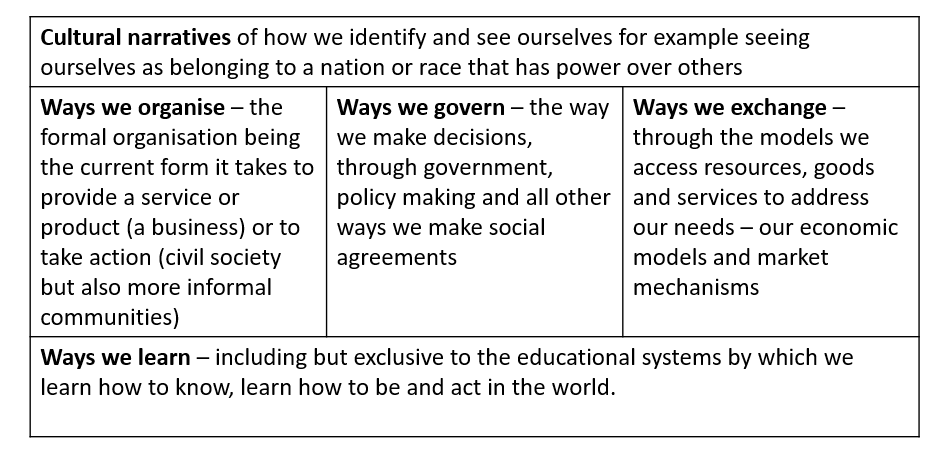
[A note — not all power over is exploitative, for example in many hierarchical organisations, however if we want to address power that is then we also need to model what new relationships of power look like, so as to offer the potential for more healthy and flourishing relationships.]
What questions does it raise?
If I am saying power is an underlying dynamic and my overall inquiry question is — How might we cultivate systemic change? Then the question(s) relating to this exploration might be:
How might we transform society, its power dynamics, from the power over model that permeates today to a just form of relating and organising that is systemic?
- How might we change the nature of our relationships?
- How do we cultivate and be in relationship?
- Who do we work with and how?
What does this mean for us personally? In the projects that we do? What does it mean at how we transform society?
Insights in to what affects power dynamics
After exploring power as an idea and more importantly in practice over the last few years here are some insights into the dynamics of power from these experiences.
Although power is relational, we as individuals also have different positions in the web of social relationships. Having an awareness of your privilege and positionality and therefore any assumptions and bias you bring to any given situation is therefore critical to understanding power.
As we grow in relationships we do not grow straight and perfect. Different experiences and traumas, where unfair use of physical, psychological or social power has been used against you (Mindell, 2014), in our past determine how we grow from the inside out. These traumas are like knots or different shapes that develop in a tree that will continue to determine how it will grow and relate to others. These might be developed from how we are parented to the culture and society we grow within. This inner world, our psychology, plays out in our relationships and therefore can (re)create power dynamics that can perpetuate harm or injustices.
Due to our different awareness's, positions and life experiences we are all on different journeys of both understanding but also being impacted by dynamics of power. I have used the metaphor of yoga to help exemplify this. When we start doing yoga we have only a certain amount of flexibility, we are only so open. The way yoga is practiced is you stretch and move to the edge of what you can do, push in slightly but not too far and then relax, you transcend and integrate. You keep practicing and over time you open up to new movements and ways of doing things. This is the same for our addressing power, everyone has different levels of fluidity, openness, flexibility and ability to deal with these questions. This does not mean we cannot go on a more intensive yoga retreat or practice daily to get better practitioners.
Understanding our position and traumas requires inner work, that is to say working on the things that activate us or trigger us — that is something that might cause us to feel emotional not by the current experience but because it takes you back to something else in your past — that stop or hinders us from moving forward on our journey. Using the yoga metaphor again, if we had a bad angle injury it would affect what moves we could do. Our development of our psyche is the same and affects how we are in relationships, as facilitators and practitioners. Inner work aims to work on these issues and help us move with fluidity and openness.
The environment we find ourselves is also extremely important. Unsafe environments that we are not prepared for can cause more harm than good, be it an organisational or workshop setting. However we also need spaces that provide the conditions for bravery to work with issues that are uncomfortable and hard to address as this is not an easy journey. For this we need facilitators.
If we see facilitators role as bringing awareness to the world, sensing and working with people and their interactions, relationships and other dimensions so as to bring forward what the world needs of us we may look at the practice of “sitting in the fire” to get used to this uncomfortableness.
As a facilitator these environments can be supported by showing both vulnerability, the openness you can display in your own learning to model opening up for others as well as knowing your boundaries and taking accountability for your actions.
Finally all power dynamics are fractals, that is to say that a pattern that is happening at a smaller level will be happening at a wider scale and vice versa. For example a dynamic that is happening between two people might also be seen within the team and then again within a wider network or society as a whole. Therefore if there is a pattern of power that has not been addressed by a facilitator team it will start to play out into the workshop and equally where an organisation is not addressing power issues themselves they are unlikely able to be addressing it in the wider systems they are trying to change.
What does this mean for the work that we do?
So if these dynamics and patterns are playing out at all scales what might some (not all) strategies for how we address the way that we might relate?
Minimise power-over
I am going to start with this framing as I feel it is the hardest one to deal with. Coming from a position of power and privilege it is critical that this does not get side-lined. Donella Meadows in her paper — Leverage points: places to intervene in a system describe how often address a dynamic by looking at solving the problem rather than looking at the dynamic that is perpetuating it. For example anti poverty programmes are weak negative feedback loops, trying to balance out the stronger positive feedback loop of a systems that brings more and more “success to the successful”. In terms of relational dynamics it is far more effective to weaken the positive loops — in this case minimising power-over relationships.
I will risk repeating myself and highlighting the two insights from above and how we must also look at them as strategies for change
- Position awareness — individually, organisationally and at any scale. Acknowledge the power and privileges we have, for example what knowledge we are privileging. Be prepared to be open about it, find ways to talk about it, be humble with what you are doing — practice vulnerability.
- Understand and deal with our triggers and traumas — so that we start the learning journey of not creating harm (again at all levels). Become really comfortable with uncertainty, being uncomfortable so you can turn towards and be centred in challenging situations.
- Be open to having difficult conversations
- Practice letting go — what would it mean for the organisation to not exist, to write its own exit strategy? What if you personally were to live on a lower income, with less consumption? This also means getting out of the way of others.
- Transition power and resources — This means working with those in power and hold decisions over the resources to use their power to shift where and how decisions get made. For example funders hold a lot of power in change systems or policy makers across society.
- It sometimes takes a generation to shift a system as mind-sets and power shift. Consider what the trajectory is for people giving up or more shifting their (supposed) power, support shifts in identity, their sense of who they are in the world. Help them become enablers, elders and play a role with those who have more power then them as part of the transitional process. What are the rituals and ways we might celebrate, acknowledge the journey.
- Change the narrative that helps build this perspective shift, whilst also recognising that language is a form of knowledge and power. This might require doing discourse analysis to support reframing.
- People cannot be coerced, invite people in to develop the collective mandate — start using participatory methods to do this (see next section). I am not however saying that there is not a role for calling out or campaigning where harmful practices are pointed out however we do need to understand them in an ecosystem of changing relationships.
Set the conditions and enable power-with
- If you are facilitating these processes really model behaviour of being open to what might emerge and the way forward. Like above — be acutely aware of your power as holding a space, ensure that you do your inner work.
- Use the power that you do have to demonstrate and use participatory methods for decision making, working together and building coalitions. This means setting the container for working and relating, through being clear about mandates, roles and responsibilities and not assuming everyone knows how to work from the get go. Ensure there is participation in the production of knowledge and learning.
- Creating safe or brave spaces for people to work together. This might be preparing people to be able to be in the room together, investing time so that new ways of relating can be found. Change can only happen at the speed of trust.
- Transparency is critical for this, allowing the process to be seen and be open to be called to account and criticism — actively inviting in alternative views, seeking wisdom in the minority to improve the decisions and processes.
- Create liberating structures, new ways of organising, regenerative cultures and rules that enable self-organisation — there are different examples and literature on these different methods — for example Re-inventing organisations.
Enable power from with-in
Much of this is also a repetition of what has been said above — supporting inner work, addressing trauma and triggers and ensuring resources are put into this work.
- Place high value on lived experience as supposed to learnt experience — which usually manifests in approaches to learning and capacity building that are transactional, delivered to people not with. Value the learning process over the knowledge accumulation.
- Follow the principle with not on. An example of this might be not creating personas of different views and perspectives but actively bringing real people into design and futures processes.
- Work is needed in the liminal spaces, find the people who can be the bridges and give them resources both time, money and safe spaces to support the transition.
- Create transitional decision making forms — for example a shadow board, to build agency to transition power
- Devolve decision making — through the above strategies ensure that the decision happens closest to the impact
- Really understand the process of personal change and what that means societally– and recognise that everyone has their own stretch and time requirements
This list of actions are by no means exhaustive, they also do not address some of the actions needed for addressing some of the specific issues such as racism, but its aim is to start to think about relational strategies that might be beneficial to all these issues. Please do also share with us others you might have and what is missing..
So where does this leave me?
I am still struggling with the process of shifting the dynamics of power on a daily basis, from every interaction I have as a leader, teacher, facilitator, director, white UK woman, parent even, trying to bring awareness to what I am doing. How I have to both step up, use my power, stand up for what I believe in and set the conditions for others and in the same breath step back and get the hell out of the way and just shut up!
How I still feel rage or anger for people not doing enough and how it bubbles over and out as I don’t know where to always put those feeling and yet trying to heed my own insights that its a journey and you cannot undo centuries if not millennia of harm and oppression that has existed in the one moment you have in front of you. And yet you try and do something and then you know every action is just not quite enough or good enough and again you find yourself fumbling around in the dark.
How I also know there is still so much that I do not see, so much of our unconscious so much of that we are all still playing the game of the current system and thinking that we can somehow change it, that its forces and dynamics are still as yet unknown. How we are complicit every day in its powers.
And so one promise I will try and commit to myself is that I will not keep ignoring the calling of this question both in my own learning and in my practice and that of those I work with. That all I do know is that I need to keep coming back to it as in itself it also has an illusive enticing power of intrigue to the flow of life itself and how it has both caused great harm and yet if relationships are also what gives us great joy and a sense of flourishing it also has the potential to bring healing.
Many of the ideas in this article have been influenced by my reading and training in Processwork — including the work of Sitting in the Fire by Mindell. I am also grateful for those those I have been co-inquiring with over the years my colleagues, co-inquirers and funders, at Forum for the Future, School of System Change, Living Change, Boundless Roots and Lankelly Chase Foundation and New Girls Network.
Originally published at School of System Change
Director School of System Change, Forum for the Future
@annasquestions
Anna is passionate about designing and facilitating systems change programmes that support people, communities and organisations to transform their practice.
PLEASE DONATE to help Network Weaver continue in it’s mission to offer free support and resources to networks worldwide.


